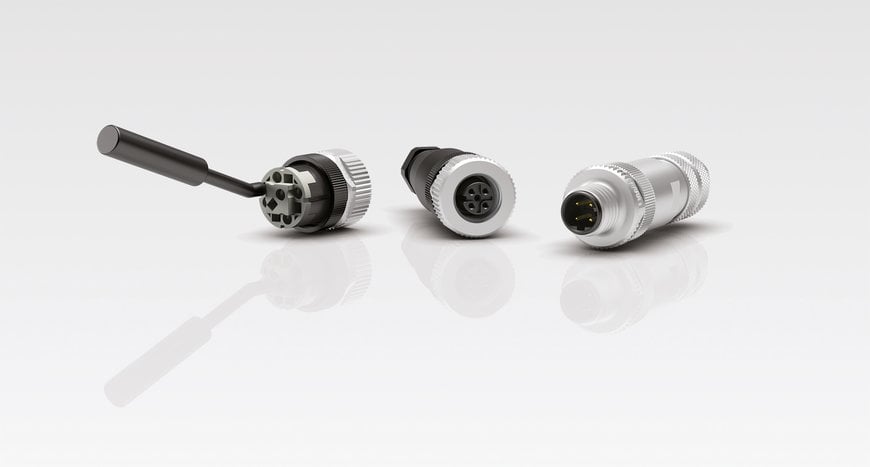www.ptreview.co.uk
25
'22
Written on Modified on
Time saving and ease of use in automation components assembly
As an alternative to the widely used screw termination, the cage clamp technology enables particularly simple implementation with very little time exposure for customer cable assemblies. Vibration-proof cage clamp variants are available for binder's M12 connector series 713, 715 and 825.

binder, a leading supplier of industrial circular connectors, is offering the field-wireable products of its M12 series 713, 715 and 825 with cage clamp quick connection. These connectors include 4-pin and 5-pin variants, both male and female. Shielded and shieldable products equipped with A, B and D coding are available. Thus, cage clamp technology covers a large part of the binder M12 portfolio.
Standardized M12 circular connectors are part of the basic equipment in factory and process automation as well as in robotics. They are mainly used for field cabling, for example of sensors and actuators. Depending on the coding, they are suitable for integrating automation components into Ethernet, Profinet, Profibus or CAN networks, for example, and can transmit signals and data as well as supply the field devices with electrical power. Connectors that can be field assembled by the customer are particularly advantageous with regard to individual, flexible cable lengths or the assembly of special cables. Here, the screw termination is particularly widespread as an inexpensive but comparatively labor-intensive technology. In the course of Industry 4.0, however, the need for data acquisition devices as well as data transmission lines is growing. Thus, the simple and fast manageability of the termination technology is becoming increasingly important: In extensive and complex installations that require a high throughput during assembly, quick-connection methods provide a significant economic benefit due to their measurable time advantage.
Background: Cage clamp termination technology
The cost-effective and user-friendly screw termination is standard across all manufacturers in the M12 segment and the right solution for a wide range of applications. However, the screw terminal connection requires a comparatively time-consuming process: the installer must use a screwdriver to loosen the respective screw, insert the wire and retighten the screw for each contact pin individually in order to clamp the wire. The cage clamp quick connection simplifies this process: insert the opening tool into the hole provided to release the spring – guide the wire into the contact hole – pull out the opening tool, which causes the spring to clamp the wire. The constant spring force permanently acting on the wire establishes contact and ensures a vibration-proof connection that also withstands shock loads. This makes the cage clamp termination recommended for applications that are subject to mechanical loads. These include in particular the use in machines that are exposed to vibrations caused by motors or manufacturing processes. Another advantage is that most of the components of the connectors, such as the sleeve or pressure screw, are identical to those of the products with screw termination. Therefore, the interchangeability of these components is given.
The 713, 715 and 825 series
binder's circular connectors of the 713, 715 and 825 series comply with the industry-relevant protection degree IP67 (713: also up to IP68/IP69K in outdoor versions). Their operating temperatures range from -40 °C to +85 °C. They are all equipped with screw locking and are optimized with regard to their EMC properties. Versions with shielding rings or iris springs are also available. The typical mechanical service life is 100 mating cycles.
The A-coded 713 series is used for signal and power transmission within the CAN, CANopen, Profibus PA (process automation) and DeviceNet protocols. It is designed for rated voltages from 30 V to 250 V and rated currents between 1.5 A and 8 A.
The B-coded 715 series is aimed at Profibus-DP (decentralized peripherals) applications at 60 V to 250 V and 4 A.
The D-coded 825 series was developed for industrial data communication in Ethernet, Ethercat, Profinet and Sercos installations. These products are designed for a rated voltage of 250 V as well as a rated current of 4 A.
Thanks to the products featuring cage clamp quick connection, an economic use of field-wireable products of all three series is supported even in extensive and complex industrial installations.
www.binder-connector.com

